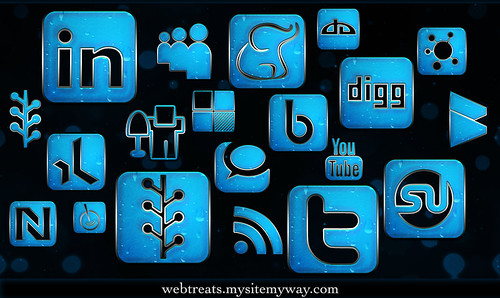If you are just thinking about starting to promote your business online then you’d be forgiven for thinking it’s a minefield with hundreds of sites that you could be spending time adding content to.
Some experts will say you need to spend time just on your own website whereas others will say Facebook, Twitter, Pinterest, LinkedIn or ShoutThroughTheWindow (ok – I made that one up).
So what is the way to get started? A recent article on the Entrepreneur website answers that very question and gives some very sound advice. Here are the important parts of the article…
Q: What tips do you have for small and midsize businesses on a tight budget to get started using social media sites like Facebook and LinkedIn, along with website development and search engine optimization?
– J. Zeches
A: This is a broad list. SEO, website and social media pretty much sums up earned and owned media. However, there is a common thread among them.
No Miracles. There are no magic tools, techniques or cures. Marketing has always been hard, and the internet hasn’t changed that. So when figuring out which route to choose, follow a few simple rules. First, avoid tools or services that seem too good to be true, as they probably are. Second, know your resources, and spend them wisely. Lastly, pick a strategy and stick with it.
For companies that don’t have a huge budget, here’s how I’d prioritize:
1. Website: No matter what your business is, your website is the central gathering place. This should be your biggest investment. To ensure the best user-experience, you should strive for your site to:
- Load in zero seconds
- Be usable on mobile devices and the desktop
- Not waste a user’s clicks or time
- Never have any kind of error
- Present only unique content on each page
- Provide every visitor with a strong Return on Time Invested, or ROTI. If someone visits your site, they’re making their first investment in the form of time. You must provide a return on that investment.
Obviously, you can’t completely meet any or all of these six goals. But you can get as close to perfect as possible, and if you get closer to perfect than your competitors, you’ll outperform them across all channels, including SEO and social media.
When you are starting out and getting your website off the ground, keep it simple.
Build your first site on a basic platform, like WordPress. Spend money on making your site easy, stable and responsive.
If you need ecommerce, look at a hosted shopping-cart service like Volusion or Shopify. Don’t try to reinvent online shopping. In my career, half the ecommerce-based businesses I’ve seen fail did so before they launched their site. Think about that. Again, keep it simple.
Before your site is ready to go live, click everything. If you see any “not found” or other errors, like slow-loading pages (compared to other sites in your industry), lousy writing or broken layouts, get your developer to fix them. You paid for something that works, not something that kind of works.
If you accomplish those goals at launch, you’ve made big steps toward strong SEO and social media campaigns.
2. SEO: You should make sure your website development takes into consideration SEO. If you built a good website (taking into account the above suggestions) so that search engines can easily find and classify the unique pages on your site, I’d suggest leaving other SEO tactics alone for now. Yes, there are techniques that help but all cost a lot of money and resources.
That said, if you are looking to hire an SEO expert make sure they can explain their tactics to you in a way you understand. If they can’t, do not hire them. SEO is the outcome of a lot of good things coming together, not some secret recipe. Anyone who says otherwise will do more harm than good.
3. Social media: As mentioned above, ignore any secret tricks. Don’t get fooled by some charlatan hawking a $470 exclusive course on how to “dominate social media” or a similar pitch. You are better off doing it on your own.
In a perfect world, you’d be present and responsive on every social network. This isn’t a perfect world. When starting out, focus on one platform. I’d begin with Facebook if you’re a B2C company and targeting an audience between the ages of 25 and 55. LinkedIn is a better bet if you’re a B2B company. Twitter can work for both B2C and B2B but only choose this network if you know your audience spends most of their time on it. Google+ and Pinterest also has implications for search and social.
Then, choose a time each day (morning is best) to check your social media channel. It can be 15 minutes, 30 minutes or 5 minutes. Whatever you can spare, but do it every single day — without fail.
For small businesses, I know it’s tempting to try a shotgun approach. Build the website, try SEO for a little while, move to Facebook, and when that doesn’t seem to work, jump to another social media site like LinkedIn.
From http://www.entrepreneur.com/article/229567


